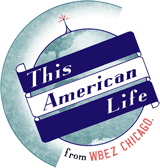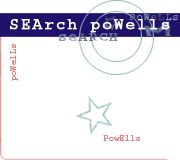

Below you'll find brief descriptions, sent in by teachers all over the country, of how they're using TAL with their students. We'd love to hear more, so if you'd like to send in descriptions of what you're doing, or maybe even samples of student work, just email us at web@thislife.org with EDUCATIONAL USE in the subject heading. Unless you say otherwise in your email, we'll assume it's okay to post an excerpt with your name and location on this page (just be warned that it sometimes takes a few months to post emails.)
You also may want to check out our comic book, Radio: An Illustrated Guide, which shows readers, step-by-step, how to craft a radio story in the style of This American Life. The comics are available at a discount for educational use.
Please don't hesitate to email us if you have suggestions on what we can to to encourage and support educational use of This American Life. We're excited about the possibilities.
Creative Writing and Composition Classes
I teach high school English. We use To Kill a Mockingbird in my classroom, located in an affluent, suburban, Midwestern town that sees very little crime or overt acts of racisim; it's about as far from Great Depression Era Alabama as one could get. That's why High Speed Chase has become an integral part of this unit. We're close enough to Chicago that it shocks kids we never heard the news of the couple introduced at the beginning of the show. And we're close enough to the Dakotas and other Indian reservations that the rest of the episode makes an even stronger impact. I use this episode of TAL as an introduction to the unit and will come back to it throughout to remind students that To Kill a Mockingbird is not an aberration of the South, that it's not solely a history of the South, and that such attitudes do not exist only in the South. On a lighter note, I also use Sarah Vowell's story in Music Lessons, parts of David Sedaris' "Santaland Diaries," and even "The Little Mermaid" from Recordings For Someone.
I used another episode last semester as a text in my students' college writing course. They streamed The Fix Is In as a precursor to crafting their own narrative essays that, in some form or fashion, relate to conspiracies and/or cultural paranoia - the central subject of their course. And this semester, I'm having them check out Three Women and the Sex Industry ... the theme for the course this time around is something a bit more uplifting than conspiracies/cultural paranoia - it's sex and sexuality.
In my Rhetoric and Composition class, I introduced my students to David Sedaris's "Santaland Diaries." Before listening to the extended version of the holiday story, Act Two of the Christmas and Commerce broadcast, my students and I explored the art of narration. After listening to Sedaris, my students traced the complex chronology of the narrative, analyzed the abounding sarcasm and irony in the work, and discussed the narrator's internal dialogue and reaction to what is going on around him and how the narrator is making sense of his world. Lastly, I asked my students to write a journal in which they became the elf--in which they became the narrator. In doing so, the students needed to describe their first day as an Elf at Macy's department store. Below is a sample.
This is so humiliating. This elf outfit makes me look like an idiot. I can't believe that I agreed to do this, but money is money. I'm now one of those pathetic people who stands on corners and make fools of themselves! I used to feel so bad for those people, and now I'm sure that everyone is thinking the same of me. But, this is all of the work that I can get. It must be better than nothing; it has to be! Hopefully, this will only be temporary; I couldn't stand the thought of having to make a fool of myself every day for the rest of my life! I'm sick of hearing all of these kids screaming and crying! I'm never going to have kids. This is so degrading. Is this what life is about? I've officially entered the category of "the lowest of the low."
I teach English Literature and Composition and basic skills Reading and Writing at the high school level. Before my students take on their first writing assignment of the year, they listen to "Squirrel Cop" in the First Day episode. This story serves two purposes: first, the students can reflect on and discuss taking risks in writing (clearly, they can't do any worse than the police officer on the recording). Second, the story's theme is metaphorically connected to what I want my kids to do during the writing process: be tactical. Plan, evaluate, and shift gears if necessary. Depending on the grade and ability level, the students' initial reactions range from "This sucks!" to rapt attention. A few minutes into the story, they're all engaged in active listening. I'm currently lobbying the district to fund sound cards in our portable laptop station, so the kids can use TAL on their own for different projects.
In Creative Writing, I have my students do a This Corvallis Life variation every semester. First we listen to a series of the tapes; I love Music Lessons and Fiasco!, but we've listened to others as well. Then, in groups of three to four, students choose a theme for life in Corvallis, Oregon, (a small, rural, university city of 50,000 in the Willamette Valley of Oregon), write essays around the theme, and then produce a permanent record of those essays, either video or audio, for the class. Themes in the past have included The Trainyard, After Midnight, Cub Foods, First Kiss, Bad Drivers, Pranks. Each presentation must have music, a narrator, all of the stories, and some sort of "deeper meaning" or reason for being. They have been highly entertaining to listen to, and have exposed all sorts of nightlife I never knew was out there!
Each semester I do different things, to keep me interested and challenged, to hopefully have better and better writing and thinking and researching opportunities for my college freshmen students. I few weeks ago I heard Act V on my local radio station, was blown away. So, the first assignment for my (100+) students this semester was to go to a PC with Internet access and speakers/headphones and listen to that show, then write a response to it. We just started discussing it in class today and it was thrilling already. There were so many positive things to come out of my students listening to this, not the least of which is their willingness to consider aspects of things they had not considered before, e.g. the humanity of "hard-core" criminals, the power of art, the importance of empathy, the transformative nature of language, etc. Moreover, This American Life's shows beg questions--a bevy from each episode, and something essential for the way I teach writing that includes research: starting with a genuine question. I think I will use several episodes of TAL and craft an entire unit of writing projects around questions from these.
I use TAL in the Writing Through Media course I teach. The subtitle of my course is Writing about Place, and in this course I and my students investigate how cultural forces, and especially the places we grow up in, affect who we become.
I recently used the TAL episode titled The House at Loon Lake both to teach about how standard narratives function and to raise a discussion of how "locals" and "outsiders" often react to the same places, and in this case, the place was the house at Loon Lake. What interested me most about my students' reactions to the episode was that while they loved listening to your show, most of them complained about the ending to this episode. As you know, this episode is a ghost story/mystery of sorts, and my students really expected an eerie or disastrous ending. This show was a great segue into a discussion about how standard narratives function, why certain endings don't seem "complete," and how Hollywood has trained us as viewers and made us long for certain types of punchlines.
As for the local/outsider division, my students made various observations (they actually had to email our class list and write about this episode, tying in reactions to a chapter we had read out of Lucy Lippard's book The Lure of the Local and also to Ross McElwee's film Sherman's March), such as the fact that while the boys who "discover" the abandoned house at Loon Lake feel a deep connection to the history inside of this house, the locals are quite detached from it and almost would be happier with the house and its memories gone. Cydney Alexis Schwartz, Graduate Teaching Assistant, University of Florida.
I used the Port Chicago story from the Jobs That Take Over Your Life episode in my ninth grade English class as a starting off point and inspiration for a persuasive essay. I used it for the first time a little over a year ago shortly after I started teaching "for reals" (as opposed to student teaching). While I was using it, my principal came in to observe me and decide whether or not he wanted to keep me on board. I later heard through the grape vine that he was impressed. The biggest thrill, however, came from one of my students who asked "How come I've never heard of this before?" I love being an English teacher that gets to teach history. I also created a curriculum unit plan about violence that used your Guns episode. The segments I used were "Fist, Stick, Knife, Gun;" and "Patato, Poh-tah-to."
I am a community college English composition teacher who uses your materials in class. My class reads about, discusses and then writes (mostly badly) about contemporary issues and I've used Take a Negro Home Tonight in discussions about race and some of the gang-related interviews/stories in our cultural outlaw section and I plan to use (but haven't yet) some of the gender-related episodes as well.
I'm using some TAL stories in my creative writing class at the University of New Mexico. We've been talking about the way stories change when you're listening to them, as opposed to reading them on the page, but I'm also using them to illustrate other elements of the craft of storytelling. My students also get some extra credit if they listen to the show and think about how the show uses storytelling devices in segments that aren't fiction.
My students in my comp classes are using TAL as a kind of "radio textbook/reader"(they love the shows very much) and our computer lab is set up with earphones and streaming capacity.
When teaching nonfiction, we use Sarah Vowell's piece about her dad and the guns to introduce narrative. When the sophomores hear her voice, they are eager to express their own stories. I have had the best results from the narrative writing assignment when using Sarah's voice.
I am about to start trying to use TAL in my classroom as part of a nonfiction series. I also plan to use it to encourage students to write/tell their own personal narratives. I teach 9-12th grade English, and absolutely love the show. I want to incorporate the art of telling a story and reintroduce radio as an art form outside the very familiar music mode. It's also a great point of departure to talk about what the "American experience" is.







